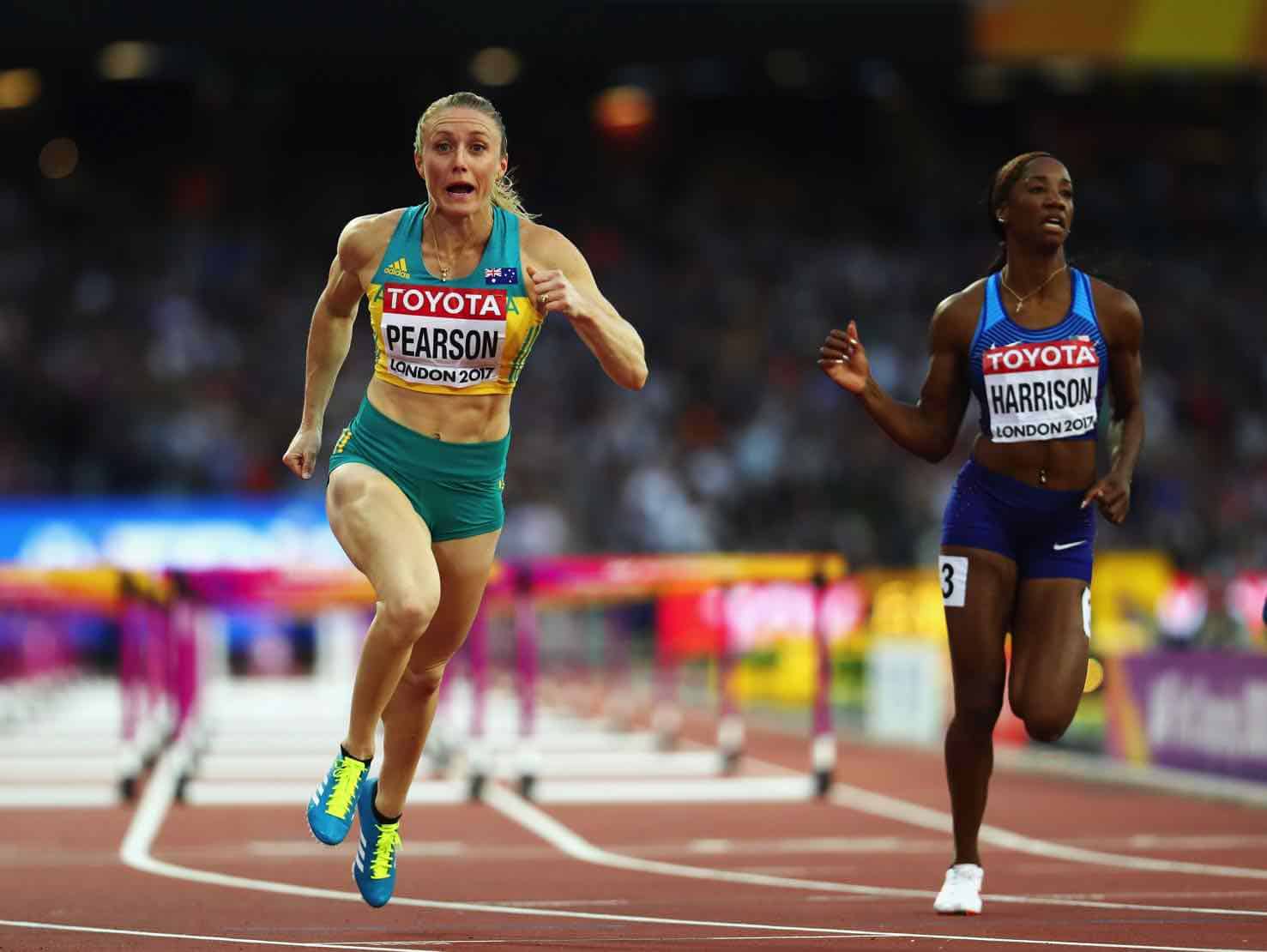A column by Len Johnson – Runner’s Tribe

When Sally Pearson crossed the line to take a silver medal in the 100 metres hurdles at the Beijing 2008 Olympic Games, she let out a scream of equal parts elation and amazement. Moments later she gasped in a trackside interview: “Oh, my God! You’ve got to be kidding me, right. Is this real?”
Give or take an exclamation mark or two, that’s about the reaction of the Australian athletics community to the news this morning (6 August) that Pearson has called time on her career.
Oh, my God! You’ve got to be kidding. Is this real.
To which the answers, in reverse order, are – ‘yes’; ‘no, she’s not’; ‘insert exclamation of your personal choice here’. Pearson might have been kidding her fans with an earlier 1 April announcement she was switching to the heptathlon, but when it comes to Olympic Games and world championships she is, reliably, dead serious.
Pearson was Sally McLellan when she took the Olympic silver in Beijing. It was not quite the performance which revealed her to the world – not the athletics world, anyway. She had been a world youth (U18) champion in 2003, a Commonwealth Games finalist, and a world championships 2007 semi-finalist. She was the fifth-fastest entrant on season’s times and Track & Field News magazine ranked her seventh, a finalist, but not a medal contender.
A year earlier, in an Osaka world championships preview for The Age, I had rated Pearson and discus thrower Dani Stevens (then Samuels) medal contenders “by next year.”
The Beijing performance, and the dramatic nature of the race in which the favourite, Lolo Jones of the USA, badly botched the second-last hurdle, propelled Pearson into the limelight. She has remained there ever since. Four years later, she won an Olympic gold at London 2012. The year before that, she had won the gold medal at the world championships in Daegu, a flawless display of hurdling leaving her rivals floundering.
Pearson ran her fastest-ever time in Daegu – 12.28 seconds – and, at the time, the fourth-fastest ever and fastest for 20 years. Her performance sparked a renaissance in the hurdles where times had stagnated in the 12.40-12.50 range until Pearson dragged them down again. At the world championships in Moscow two years later, Brianna Rollins of the US, who had run 12.26 to win the national collegiate title, beat the Australian into second place. The world record is currently held at 12.20 by another American, Kendra Harrison.
Even before Osaka, Pearson had demonstrated her ambition. At the 2003 world championships, a couple of months before her 17th birthday, she had run the 4×100 relay and put her hand up for the 4×400 when another athlete was injured. Ultimately, the team did not compete but neither Pearsons’ precocious talent, nor her willingness to put herself forward in a championship environment, went unnoticed.
The next few years was not all plain sailing as Pearson continued to combine flat sprints and hurdles. At U20 level, she won a bronze medal in the 100 at the world championships in 2004, but finished fourth in the hurdles. At the Melbourne Commonwealth Games, she finished seventh in the final of the flat event and then, devastatingly, fell and was disqualified in the hurdles final.
Osaka 2007 was her final attempt at combining the two events, at least at the highest level. Pearson ran 11.14 in the heats of the 100 – the second-fastest performance ever by an Australian behind Melinda Gainsford-Taylor’s national record 11.12 set at high altitude; she was run out in the semi-finals, however, and suffered the same fate in the hurdles.
Pearson had one more attempt at combining individual events in the less intense environment of the Delhi 2010 Commonwealth Games. She ‘won’ the flat 100 after running the final under protest at being disqualified for a false start. With the dismissal of her protest, Pearson’s gold medal went out the window, too. She won the hurdles to compensate, then retained her title four years later in Glasgow.
Injuries have been a factor throughout Pearson’s career. She suffered severe back spasms just days before the Berlin 2009 world championships and finished fifth in the hurdles final. She missed the Rio 2016 Olympics and her hometown Gold Coast 2018 Commonwealth Games with leg injuries. Most catastrophically, she broke her arm in a race fall in 2015 and missed the Beijing world championships.
Pearson had to rebuild her starting position, but returning to the London Olympic stadium, she won her second world championship gold medal in 2017. Again, it was her lightning start and near-perfect technique which got her home.

From junior days to London 2012, Pearson was coached by Sharon Hannan. Latterly, she has been self-coached, though she acknowledged strong support of team coaching staff in winning her second world championships gold medal.
Two final questions inevitably arise: why now, and where does Pearson rank amongst Australia’s greatest female athletes.
To the first, Pearson said in her retirement announcement: “I have prided myself on always being on the start line ready to win. I no longer believe I can achieve this.” Simple as that.
The second is more contentious. Comparisons are always odious, especially across eras and when trying to measure shorter, more brilliant careers against longer ones of sustained, high-level consistency. Let’s just say Sally Pearson belongs in, and brings a strong case to, the “greatest ever” conversation.
